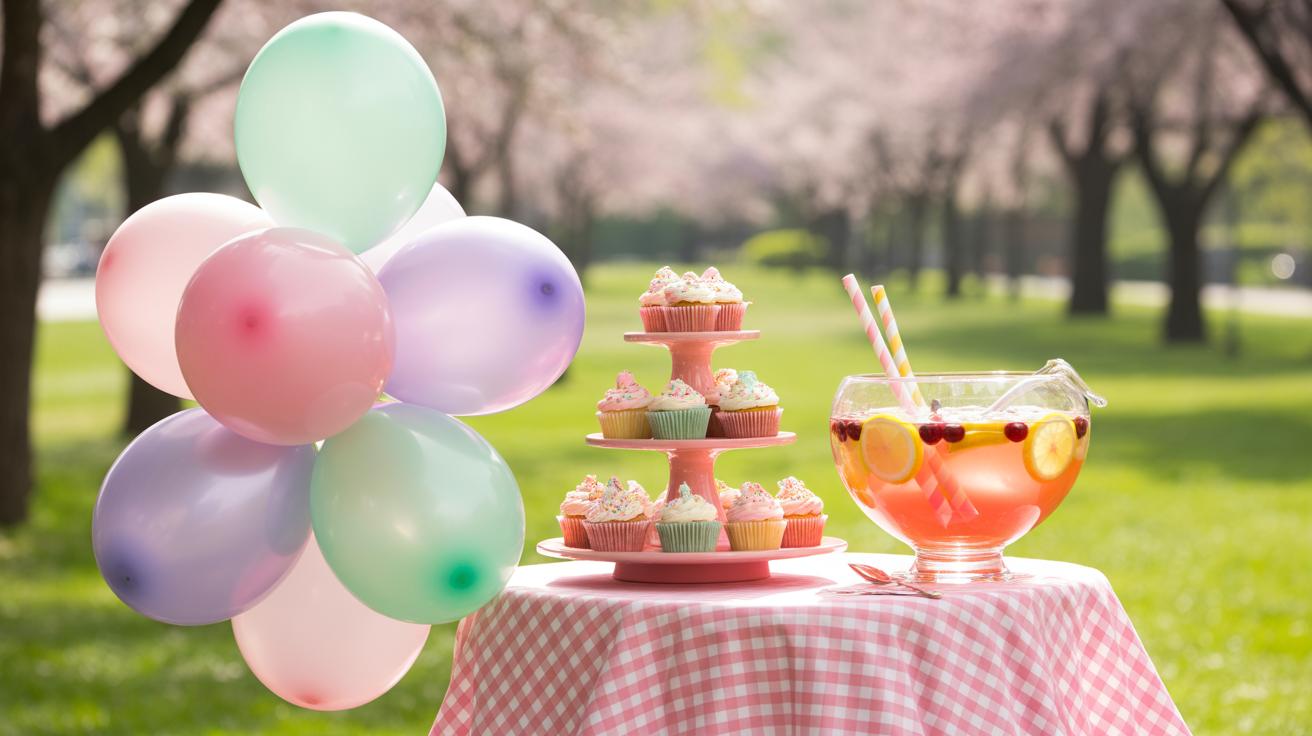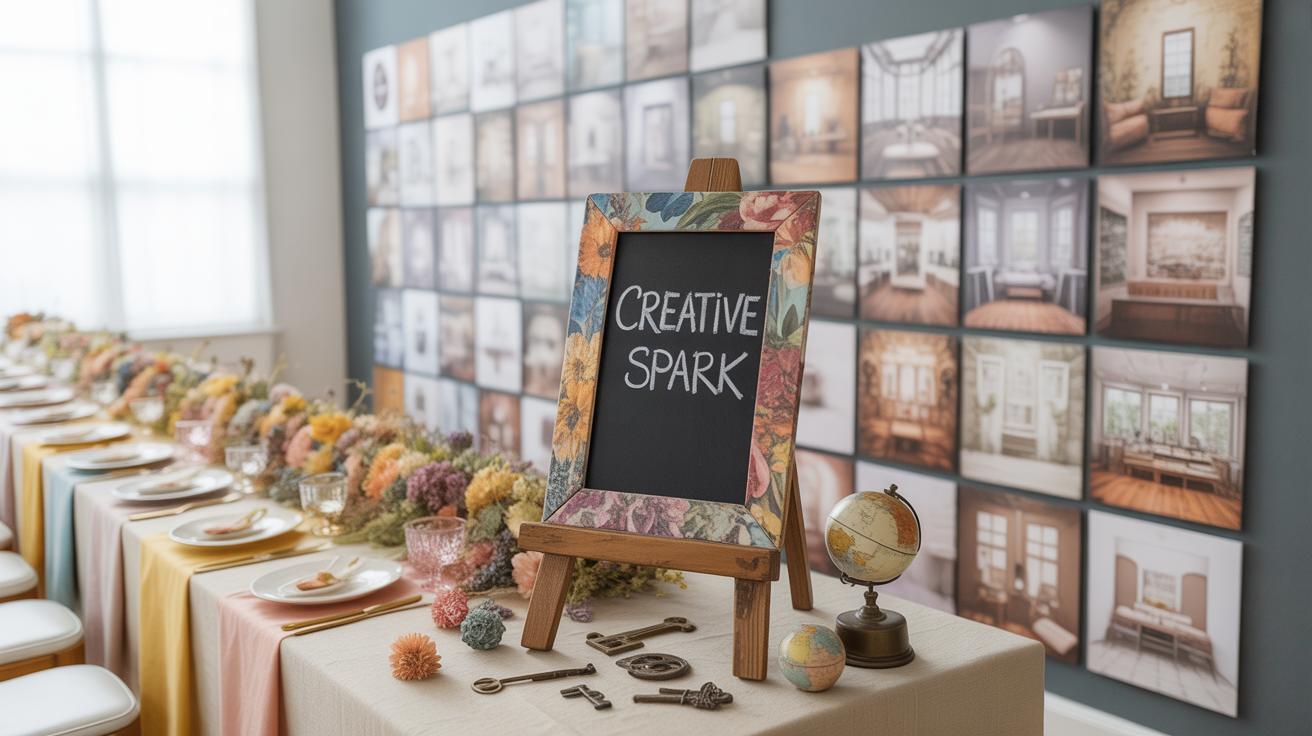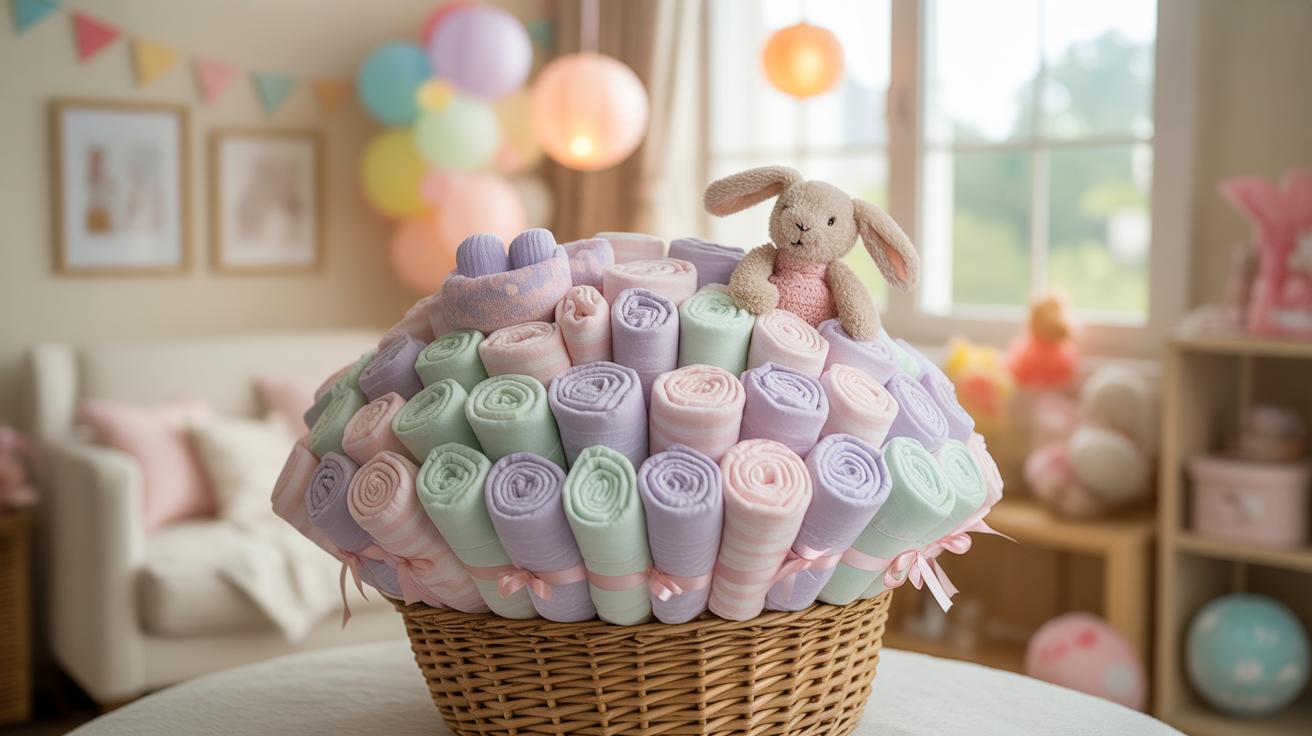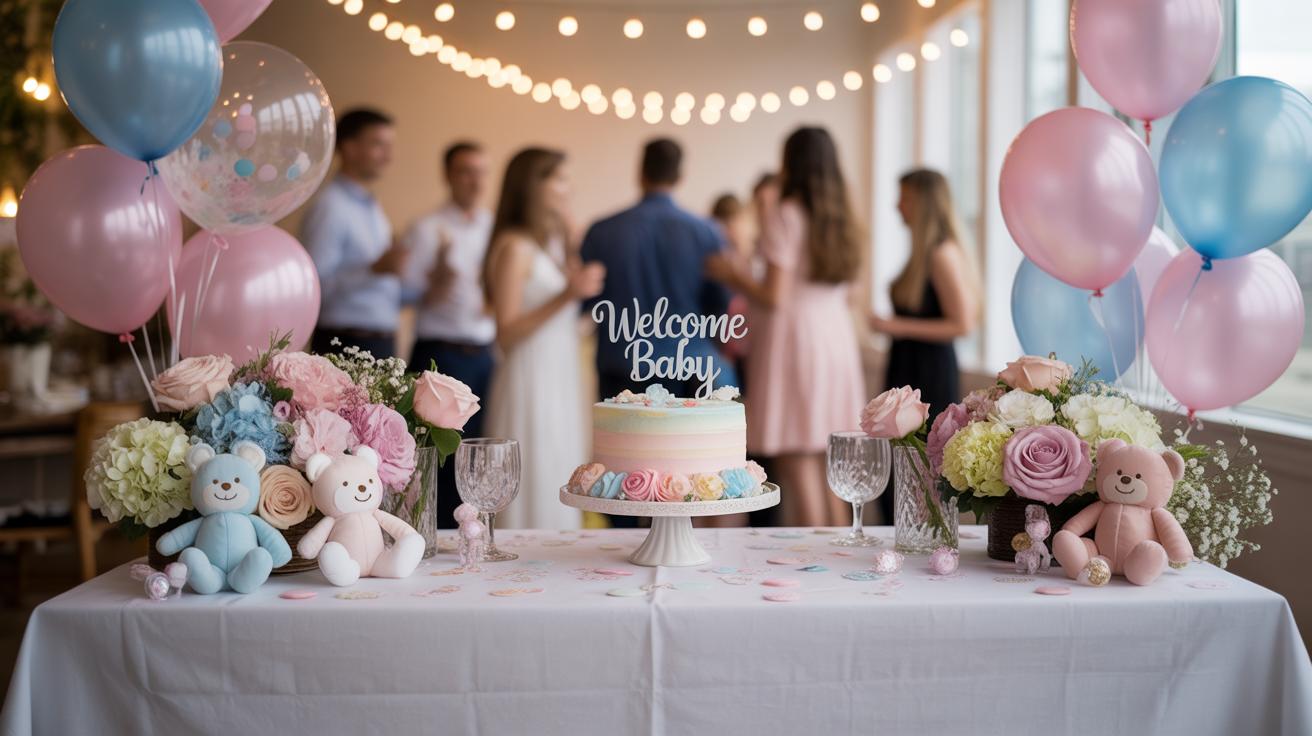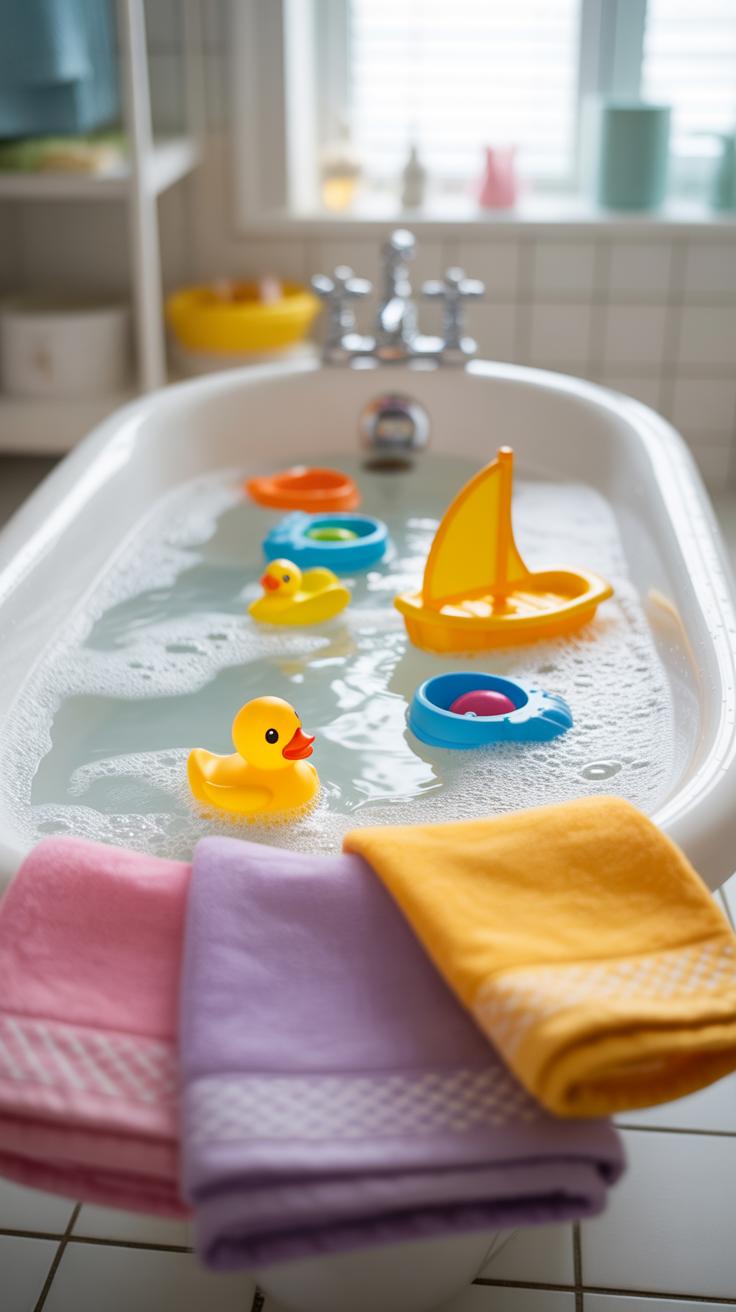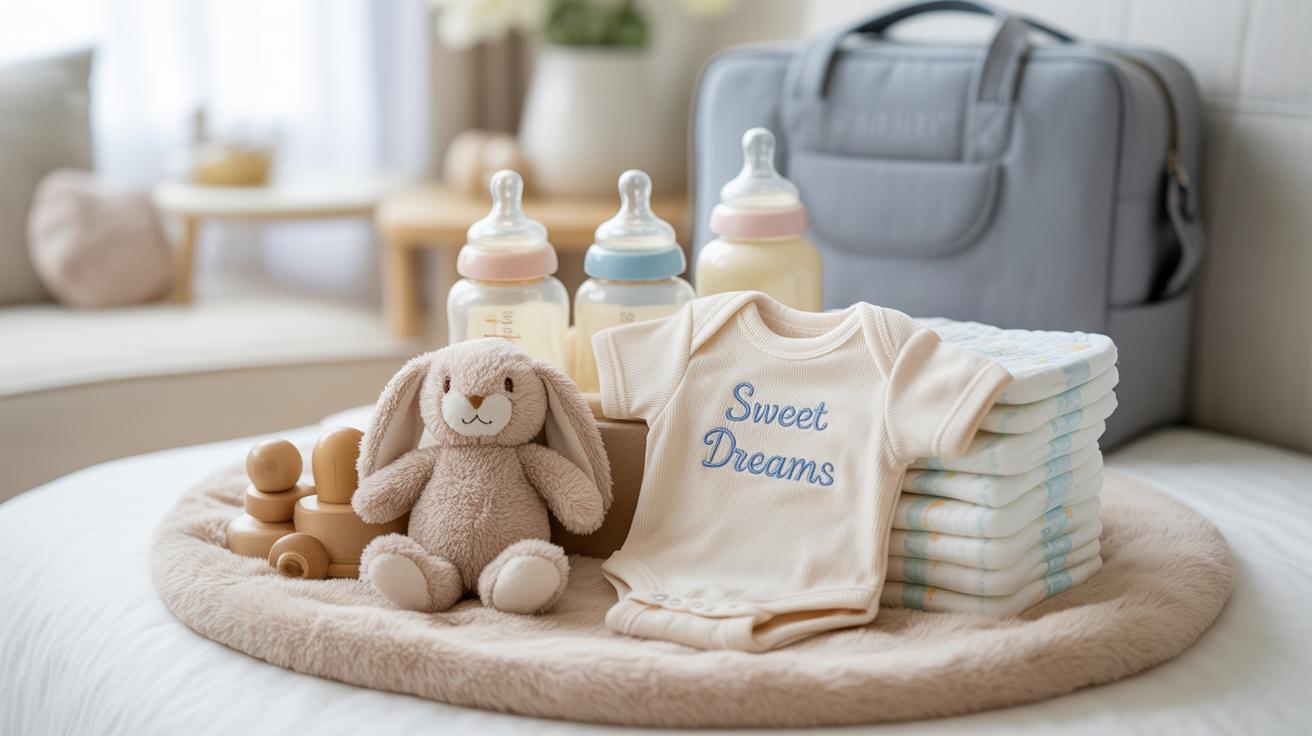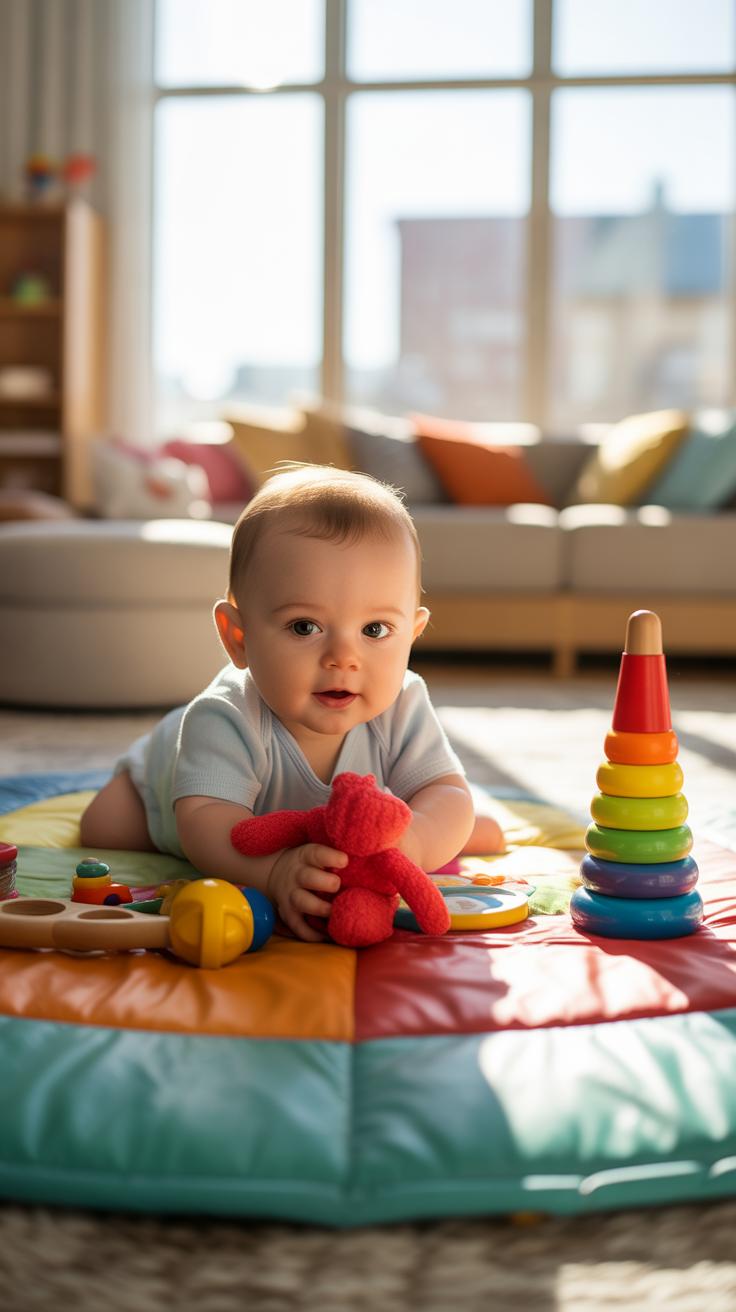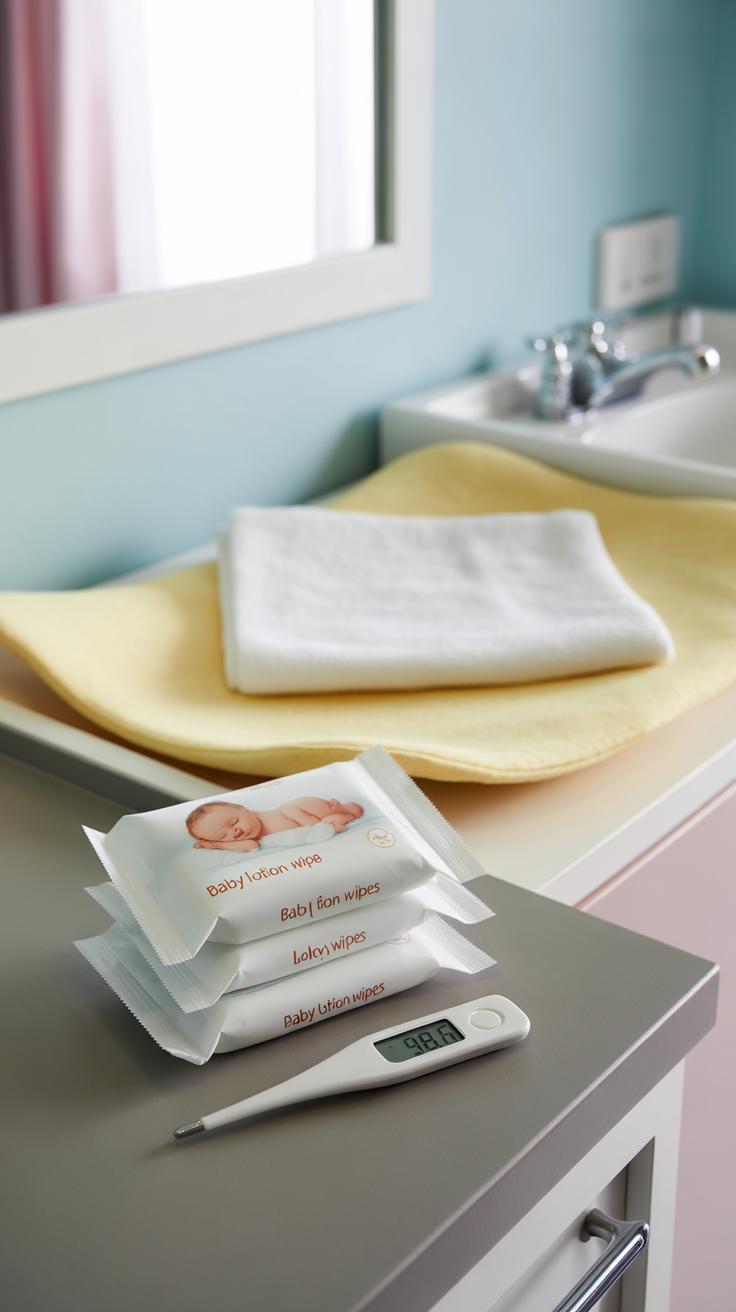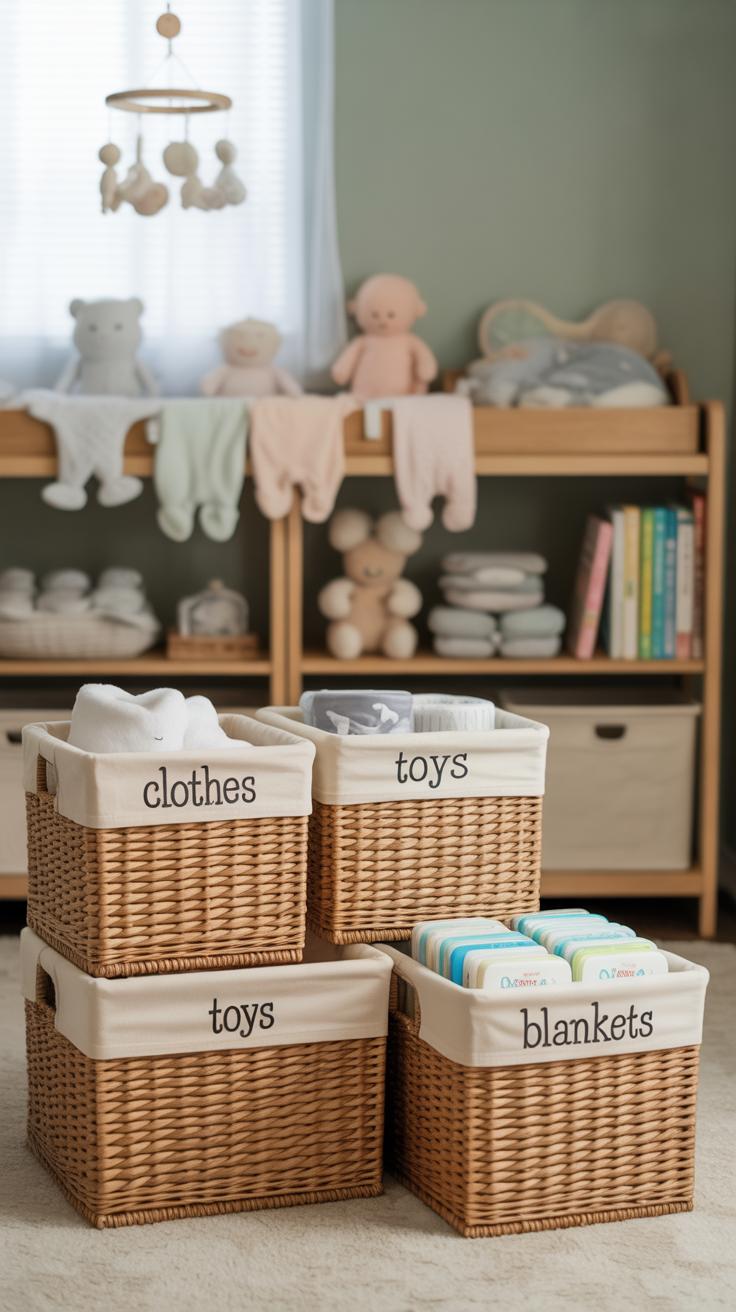Introduction
Cool baby stuff can make a big difference in the lives of parents and their little ones. These items are designed to provide comfort, safety, and practicality. Knowing what products to choose can help you care for your baby better. This guide will walk you through the best baby products that every parent should consider.
From feeding essentials to safety gear, each item plays a role in your baby’s daily life. Understanding these products helps you pick what works best for your family. Whether you are a new parent or looking to upgrade your current baby gear, this article offers useful insights and tips to find and use the coolest baby stuff available.
Choosing Safe and Comfortable Baby Furniture
Picking baby furniture isn’t just about looks or matching a nursery theme—it’s really about your child’s safety and comfort. Babies spend a lot of time in their cribs, bassinets, or baby chairs, so these pieces must support healthy rest and prevent accidents. You want furniture that feels cozy but also holds up well under daily use.
There are many options when it comes to baby furniture. Cribs come in standard sizes, convertible styles that grow with your child, and portable mini versions ideal for small spaces or travel. Bassinets offer a snug, smaller sleeping area for newborns, often easy to move around. Baby chairs—like rocker seats or supportive floor seats—help your child sit safely while awake and alert.
When choosing materials, natural woods or metals with smooth finishes tend to last and stay sturdy. Fabric parts should be breathable and easy to wash. Design-wise, look for rounded edges and simple lines that don’t trap little fingers. Spaces between crib bars need to be just right—too wide can cause injury risks, too narrow might feel confining.
Safety features to prioritize include:
- Solid construction with no loose joints or parts
- Non-toxic, lead-free paints and materials
- Proper bar spacing on cribs—about 2 3/8 inches apart
- Stable bases that don’t tip easily
- Mattresses that fit snugly without gaps
Why does this all matter so much? Well, baby furniture is where your child spends much of their early days and nights. Having a secure, comfortable place can mean fewer wake-ups and less worry for you. Plus, safe furniture lets you relax. You get peace of mind knowing your baby’s environment supports good sleep and growth, rather than posing hidden dangers.
Essential Feeding Tools for Your Baby
Feeding your baby is more than just nutrition; it’s a moment for bonding and comfort. Various tools make this experience easier for both of you. Bottles come in many shapes and sizes, with features aimed at mimicking breastfeeding. High chairs, too, play a role by providing a safe and stable place for baby during mealtime, encouraging independence and family interaction.
Breastfeeding pumps offer a different kind of support. They allow mothers to express milk, making feeding flexible even when they’re away. Pumps can ease the pressure of a strict feeding schedule and help store milk. This might be especially helpful if you want to share feeding duties with a partner or caregiver.
Using the right combination of these tools can create a smoother feeding journey. But it often takes some trial and error to find what fits your baby’s preferences and your routine. I know from experience—it wasn’t instant for me, and perhaps it won’t be for you either. Still, once you get it right, feeding time becomes a little less stressful and more connected.
Choosing the Right Bottles and Nipples
Picking bottles and nipples feels straightforward but it’s not. You have to think about:
- Material: Glass, plastic, or silicone? Glass is durable but heavier. Plastic is lighter but sometimes raises concerns about chemicals.
- Size: Small bottles might feel easier to handle for tiny hands; larger ones could be better for longer feeds. Choosing the wrong size can lead to wasted milk or frustrated baby.
- Flow rate: Different nipples offer different flows—slow, medium, or fast. Too fast can cause choking or gas; too slow might frustrate your baby and prolong feeding time unnecessarily.
Sometimes, it’s less about the “best” bottle and more about what your baby prefers on a given day. Flexibility matters.
Benefits of Breastfeeding Pumps
Breastfeeding pumps do more than just collect milk. They provide freedom, allowing the mother to step away briefly without interrupting feeding. That can help with work schedules, errands, or even just taking a break. Plus, pumping helps maintain milk supply if direct breastfeeding isn’t possible every time.
Storage is another perk. You can create a milk stash for emergencies or when you’re tired. But pumps don’t replace the feel of nursing, which some babies might prefer. Still, having one on hand might ease anxiety about feeding on the go, giving both parents more options.
It’s worth trying to find a pump that works quietly and comfortably. Noisy or bulky pumps can make the experience feel more like work, which isn’t ideal when you’re already juggling so much.
Baby Clothing That Is Both Practical and Cute
Picking out baby clothes isn’t just about looks, though cute outfits are fun. What really matters is comfort and ease. Babies wiggle a lot, so clothes that slip on and off easily—like those with snap buttons or roomy necks—make dressing a lot less stressful. Think of onesies or rompers with front snaps; they save time during diaper changes and fuss.
Different seasons call for different choices too. You wouldn’t want your little one overheating in bulky clothes on a warm day, or shivering in thin cotton during winter. Layering is a practical way to adapt quickly. So, having a mix of lightweight tops and warmer sweaters or jackets helps you respond to temperature changes without hassle.
Materials That Are Best for Baby Clothes
Soft fabrics like cotton tend to be the go-to—and for good reasons. Cotton is breathable, which helps prevent irritation or rashes on sensitive baby skin. When my niece was newborn, her mom switched from synthetic blends to pure cotton, and the difference in her skin was noticeable within days.
Some parents try bamboo or organic cotton, which feel gentle and are often hypoallergenic. But every baby reacts differently, so a little trial and error might be needed. Also, keep an eye out for tags or seams that can irritate—sometimes the fabric is fine, but the stitching can be a bother.
Seasonal Clothing Tips
Layering clothes is really handy, especially when the weather changes unpredictably. For warm weather, light cotton onesies with a thin sun hat might do. If it’s cold, add a snug sweater and a onesie underneath, topped with a windproof jacket. Don’t forget mittens and booties for chillier days—they keep tiny hands and feet cozy.
When going outside in colder seasons, protective outerwear should be water-resistant but still breathable. Heavy winter suits sound comforting but might make movement hard for a baby learning to crawl or walk. Sometimes, choosing several lighter layers that let them move feels better than one bulky piece.
Travel Gear That Makes Moving Around Simple
Choosing the Right Stroller
Strollers come in many shapes and sizes, each suited for different needs. You might find yourself torn between lightweight models and all-terrain options. Lightweight strollers are easy to fold and carry, perfect if you’re often on public transport or need something compact for quick errands. On the other hand, all-terrain strollers handle rougher paths better, great for parents who like to hike or live in suburban areas with uneven sidewalks.
Think about where you’ll use it most. If it’s mostly city streets, a smaller wheelbase stroller could be just fine. But if your routine includes parks or trails, an all-terrain might save you some headaches. Don’t forget comfort—for both you and your child. Look for adjustable handles, good suspension, and enough storage. Sometimes, you might want a travel system that combines a car seat and stroller, making transitions easier, though these can be bulkier.
Car Seat Safety and Convenience
Car seats should do more than just keep your baby snug—they need to protect in a crash, which is not negotiable. Always check if a car seat meets current safety standards like those from the National Highway Traffic Safety Administration or the equivalent in your country. Features like side-impact protection, easy harness adjustment, and clear installation guides are worth the extra attention.
Installation often trips up new parents. Even when you think you’ve got it right, it’s good to double-check—maybe with a certified technician or local inspection event. Do you use the LATCH system or seatbelts? Both can be safe if done properly, but mixing methods can be risky. Also, consider car seats with removable covers for washing, since messes happen. Remember, a safe and convenient car seat makes the whole journey less stressful—for you and your baby.
Bath Time Essentials for a Fun and Clean Routine
Choosing Gentle Bath Products
When it comes to bath time, what you use on your baby’s skin matters more than you might think. Babies have super sensitive skin that can easily get irritated. So, picking soaps and shampoos labeled as gentle or hypoallergenic isn’t just a nice idea—it’s practically a must. These products usually skip harsh chemicals, fragrances, and dyes, which helps avoid redness or dryness.
Still, even among gentle soaps, variety exists. For example, some parents find tear-free shampoos work well to prevent discomfort, while others prefer soap-free cleansers that just feel lighter on the skin. Sometimes you need a bit of trial and error to find the right one for your baby. Have you noticed how the simplest shampoo might cause unexpected dryness? It happened to me, so I switched to an oil-based cleanser, and that seemed to calm my baby’s skin.
Safe Baby Bath Tubs and Accessories
Choosing the right tub can make bath time easier for you and safer for your little one. You’ll find several styles: from basic baby tubs that fit in your sink or bathtub to more advanced ones with built-in supports. Some even have temperature indicators, which I think are pretty helpful because you never have to guess if the water feels right.
Bath seats and loungers can offer extra comfort, especially when babies can sit up but still need some help staying steady. Still, supervision remains key—no gadget replaces attentive eyes. On a practical note, a small bath thermometer removes the guesswork from water temperature and can really ease any worries you might have.
Plus, don’t underestimate the value of a soft, absorbent towel designed especially for delicate baby skin. Hooded towels keep your baby warm right after the bath and can turn drying into a cozy moment, not a struggle. Have you tried these yet? They certainly made my nightly routine less stressful and, sometimes, even fun.
Toys That Stimulate and Entertain Your Baby
Types of Developmental Toys
Toys do more than just keep babies busy—they play a big role in shaping their senses and skills. Think about rattles; they encourage your baby to grab and shake, connecting movement with sound. Soft blocks invite touch and stacking, helping tiny hands get better at controlling motion. Brightly colored mobiles or toys with contrasting patterns catch little eyes, boosting visual recognition. You might notice your baby focused longer when a toy makes noise or has different textures. These experiences matter because exploring touch, sight, and movement lays the groundwork for future learning. Sometimes, parents overlook simple toys, but it’s these basics that spark curiosity. So, focus on toys that let babies move, feel, and watch—the combination encourages early development naturally.
How to Choose Safe Toys
Choosing toys isn’t just about fun; safety should be front and center. Avoid anything with small parts that could come loose. Babies explore with their mouths, so toxic paints or materials are a no-go. Look for labels stating BPA-free or non-toxic components. Also, check for durable construction—no sharp edges or loose strings. You might think brightly flashing toys are best, but they sometimes use harsh batteries or emit loud noises that startle babies. The simpler, the better, actually. Oversized pieces with smooth surfaces usually work well. When in doubt, read reviews or get recommendations from other parents. It’s tricky, because what’s safe for one child might not be for another, depending on how curious or rough they are with their toys.
Health and Hygiene Products for Your Baby
Keeping Your Baby Clean and Comfortable
There’s just something about knowing your little one is clean that makes daily life feel more manageable, right? Wipes are a staple for quick cleanups—whether it’s after a messy meal or a diaper change. Choosing gentle, hypoallergenic wipes can really reduce skin irritation, though you might find different brands work better as your baby grows. Some parents swear by plant-based formulas; others stick to what’s been reliable so far. Nail clippers designed for tiny fingers are another must-have. It’s tricky trimming those nails without accidentally hurting your baby, so clippers with safety guards help build some confidence.
Keeping your baby’s skin dry and comfortable is about establishing simple routines. Powder or balm can soothe redness or chafing, but use them sparingly. The key is observing how your baby’s skin reacts—no one formula fits every child perfectly.
Basic Health Monitoring Tools
Tracking your baby’s health sometimes feels overwhelming, but having a few basic tools can ease the task. A reliable digital thermometer is probably at the top of the list. Taking temperatures quickly and accurately saves stress during those inevitable fevers, and some models even sync with smartphone apps to keep records. It might surprise you how often you’ll check—sometimes out of caution, sometimes just to reassure yourself.
Other tools, like nasal aspirators, help clear congestion without fuss. You might wonder if it’s necessary initially, but once that first cold hits, it becomes clear why this is a staple in most baby kits. Even a simple first aid kit with baby-safe ointments and bandages is worth keeping within reach. These small investments help parents act swiftly, which feels better than scrambling for supplies in a pinch.
Sleep Aids That Help Your Baby Rest Well
Benefits of Swaddling
Swaddling is a practice that wraps your baby snugly in a blanket, mimicking the cozy feeling of the womb. Many parents find that it helps reduce their baby’s startle reflex, so the little one doesn’t wake up as often. It seems simple but can actually make a big difference in how a baby settles down. Some babies really take to it and seem calmer, while others might fuss more—you guess which group your child belongs to might take a bit of trial and error.
Swaddling can provide warmth and a gentle pressure that makes babies feel secure, often helping them sleep longer stretches. But, of course, safety matters—you want to make sure the swaddle isn’t too tight and that the hips can still move freely. Lots of swaddle designs these days make that easier, with adjustable wraps or ones with snaps.
Using Soothing Sounds and Lights
White noise machines are popular tools for creating a sleep-friendly environment. They produce consistent sounds, like rainfall or a gentle hum, which can mask sudden noises and prevent your baby from waking up startled. It’s interesting how these repetitive sounds can soothe some babies but might be ignored by others. You might need to try a few different ones before finding the right match.
Night lights serve more than just visibility—they offer a soft glow that keeps the room dim but comforting. This low-level light can help your baby’s brain shift gradually into sleep mode, especially if they have trouble adjusting from day to night. Some night lights even change colors or dim automatically, which can be handy during late-night feedings or diaper changes.
Combining swaddles, white noise, and gentle lighting could be your recipe for better sleep. Maybe you’ll find it’s just one thing that clicks for your family, or perhaps it’s a mix that works best. Either way, these sleep aids are definitely worth trying out.
Organizing Baby Gear for Easy Access
Storage Solutions for Baby Stuff
Keeping baby items neat can feel like a never-ending task. But with a few practical storage pieces, it gets simpler. Bins are great—they stack easily and can separate toys from clothes or toiletries. Clear bins help you spot what you need without digging around, which is a small win when time’s tight.
Open shelves let you keep everyday items visible and handy. They invite you to put things back quickly, though they might look cluttered fast. Some parents swear by fabric baskets on shelves, saying they soften the look and keep things more contained without much hassle.
Portable storage bags work well, especially for smaller spaces. Some have compartments—perfect for sorting socks, bibs, or pacifiers. But if you aren’t careful, these bags turn into a mixed pile inside. So, maybe a combination of shelves and bins feels right for most families.
Tips for Keeping Gear Ready to Use
Setting up a changing station with everything within reach is a game changer. I’ve noticed that having diapers, wipes, creams, and a couple of fresh outfits right there shortens stress and fumbling. Ideally, use washable pads or liners to keep it clean and swap them out quickly.
When it comes to diaper bags, organization matters more than you’d think. Multiple pockets for different items prevent that “toss everything in one big space” problem. Packing essentials in small pouches inside the bag keeps you prepared and saves time hunting for stuff during a quick diaper change.
One tip: restock your gear right after each use. It’s tempting to procrastinate, but this habit keeps you ready for the next moment without scrambling. You might even think about keeping duplicates of the most-used items scattered around the house or car to avoid any last-minute surprises.
Conclusions
You now have a clear view of some of the best baby products to support your parenting journey. These items improve the quality of care you provide to your baby. Focusing on comfort, safety, and convenience will benefit both you and your child.
Remember to choose baby stuff that fits your specific needs and lifestyle. By making informed choices, you ensure your baby has what they need to grow happy and healthy. Your effort in selecting the right gear today will make your parenting experience smoother and more enjoyable tomorrow.



